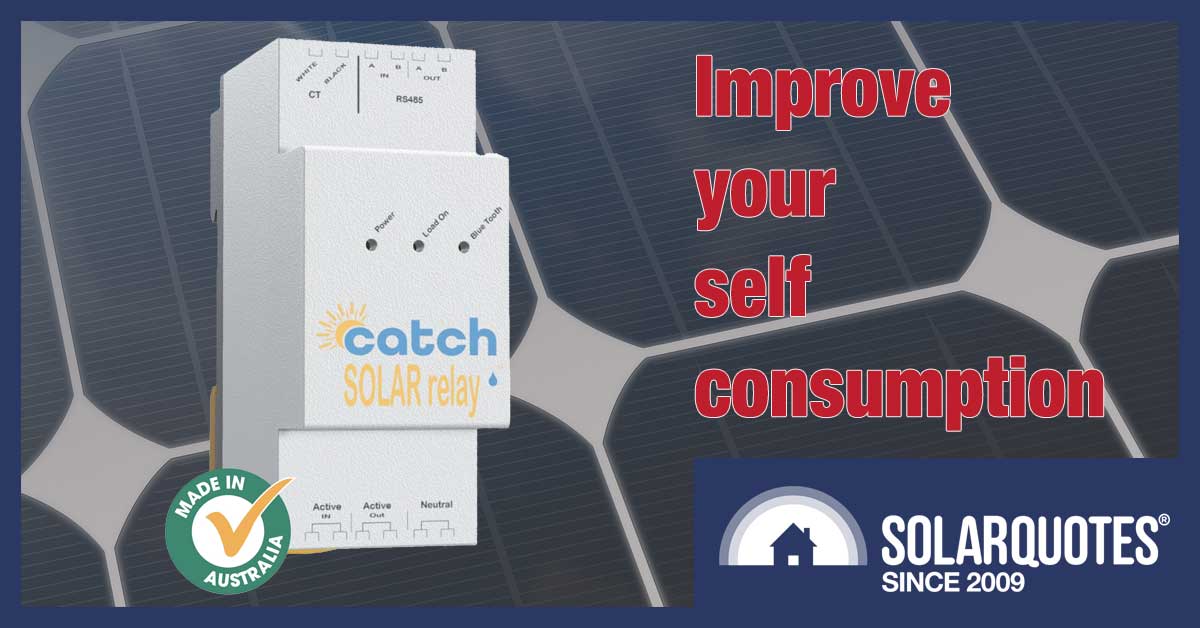
The Catch Solar Relay is a cheap, simple & smart way to improve your solar self-consumption.
Update: See our 2024 review of the Catch Solar Relay’s new features here.
As we approach the final quarter of 2020 even COVID can’t stop Australians installing more solar than ever before.
And with so much solar electricity being generated in the middle of the day, the value of energy between 10 am and 3 pm is falling.
This means feed-in tariffs are starting to drop around Australia. While they are unlikely to go to zero, they have already dropped to 3c in WA (before 3 pm). Markets in other states will likely soon follow WA’s lead.
Some analysts are predicting that lower feed-in tariffs will lead to a slump in solar power system sales. These analysts should probably spend a day selling solar to homeowners. Australians are not going to stop buying solar any time soon – it has gone mainstream. You buy a house, you put solar panels on it. Big electricity bills are for suckers.
Also, most Aussies are pretty smart. They understand there are lots of ways to maximise self-consumption. Deep-pocketed homeowners may splurge on a battery. Other people are looking for more affordable ways to use more energy in the day – and less after sunset.
The simplest and cheapest way to maximise self-consumption is to take all your time-agnostic appliances1 and run them when the sun is shining. The cheapest way to do this is with a timer switch.
If your appliance plugs into a 230 V socket, you can use a $10 timer like this:
Examples of plug-in appliances you may want to consider switching on during the day and off at night are:
- heaters
- coolers
- dehumidifiers
- towel heaters
- beer fridges
- grow-lamps (Ronald’s suggestion)
- pool filters
- old appliances that have high standby loads (note most modern appliances have such low standby power that they are not worth worrying about)
If the appliance you want to control is hard-wired, you can get a sparky to install a hardwired timer for $200-$300. For ‘set-and-forget’ applications, you can get ones that sit in your switchboard:
Or if you want to be able to more easily access the timer to override it or change the settings, you can get wall-mounted models:
With a simple timer, if your solar system is large enough, the sun is strong enough, and your other appliances aren’t using too much, then you can power the appliance with solar energy instead of grid electricity.
If the purple line is the power consumption of the appliance, then the area under the line is the energy consumed by the appliance. Let’s say this appliance has consumed 2 kW of power for 4 hours, totalling 8 kWh of energy.
Happily, in the example above, on a sunny day with little self-consumption from other devices, the appliance is 100% solar powered. For a WA household, this would only cost them $0.03 per kWh (their forgone feed-in tariff), $0.24 in total.
However if on any given day there is not enough solar electricity, that appliance will need to get some of its energy from the grid:
Here the surplus-solar curve has been reduced by both inclement weather and the self-consumption of other loads in the house. Our appliance is getting about 75% of its energy from the solar panels (yellow area) and 25% from the grid (purple area). If the cost of grid electricity is $0.29, it has cost (6 kWh x $0.03) + (2 kWh x $0.29c) = $0.18 + $0.58 = $0.76 in total.
And if it’s a really shitty day, you’ll have very little spare solar and will be powering most of the timed appliance from the grid:
Here about 80% of the appliance’s consumption is from the grid and the cost to power it is $1.80.
Different appliances have different needs
Depending on the nature of the appliance, you may only want to run it on days where cheap energy is available.
For example:
- Electric car charger
- Bitcoin mining rig
- Hydrogen electrolyser
- Pump to a big water tank
- Swimming pool heater
Other types of appliances need to get a minimum amount of energy every day no matter how little solar power is available:
For example:
- Hot water heater (unless you are Tony Robbins and enjoy a cold shower)
- Air conditioner (unless you are happy to suffer in a hot house)
- Electric car charger (when your battery is low and you need to drive tomorrow)
- Pool pump (unless you like swimming in a dirty pool)
- Refrigeration of perishables
If you simply must run the appliance every day – even when there is not enough solar electricity – you might want to top it up with energy after sunset. This makes sense if you get a cheaper tariff in the evening and overnight.
For our example in WA, the Synergy ‘Smart Home’ Time Of Use tariff offers 15c per kWh electricity from 9 pm to 7 am, compared with 29c during the day.
To take advantage of this $0.15 per kWh off-peak rate, as the ‘next-best’ option after your $0.03 per kWh solar energy, there’s a need for a smarter timer switch. One that knows how much solar electricity is available at any moment in time, switching the appliance on during the day when there’s enough solar, and then topping it up later if necessary on the cheapest grid tariff.
Enter Catch Power’s Solar Relay
This device is installed in your switchboard and can sense how much solar electricity is being exported to the grid in real-time.
Update 4:50 pm 14th Sept 2020: Catch Power have told us the recommended retail price of the Catch Solar Relay is $357.50 including GST.
You can configure it with your phone so that it only switches your appliance on2 when enough excess solar electricity is being generated. This is called ‘export control’ mode.
The logic has been well thought through. To stop your device oscillating on and off when a cloud passes, or the kettle is boiled, you can specify the:
- above threshold
- above time
- below threshold
- below time
For example: imagine you have an appliance that pulls 1 kW of power when active and configure it thus:
- ‘above threshold’ to 2 kW,
- ‘above time’ to 5 minutes
- ‘off threshold’ to 0 W
- ‘off-time’ to 5 minutes
In the morning, the relay will wait until it sees 2 kW of solar exports for at least 5 minutes. Then it will switch the appliance on. The solar exports will drop to 1 kW as soon as the appliance activates. The relay will not switch it off until the solar exports drop below 0 kW for at least 5 minutes. If you put the kettle on for a cup of Proper Strong Yorkshire Tea (a 2 kW load for about 2 minutes), the appliance will ride through the short dip in exported solar electricity caused by the kettle element.
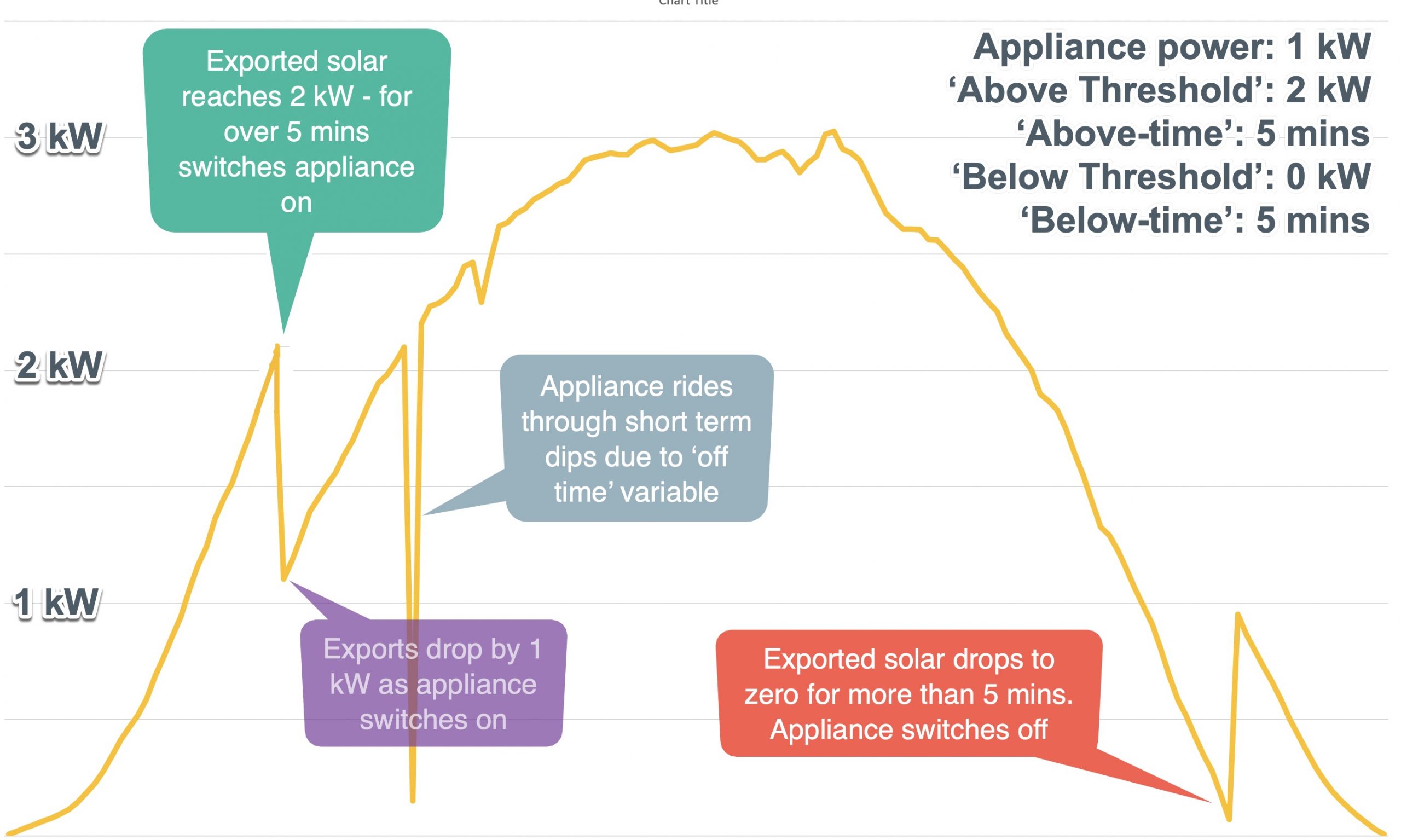
The Catch Solar Relay in ‘Export Control’ mode. Note: the yellow line shows exported solar, not gross solar generation.
But what happens on an overcast day?
Then the appliance will only get a fraction of its required energy from the sun. If the appliance is a hot water heater, your water will be cold. If it is an air conditioner, your house will be too hot. If it is a beer fridge, your VB will be a ‘Big Warm Beer’.
This is where the Catch Solar Relay’s ‘top-up’ mode comes in. You can configure the relay to top up the appliance with energy later for those days when there’s not enough sun.
As mentioned before, if you are on a single-rate tariff, this would not make much sense. You pay the same for your electricity 24 hours a day, so you might as well use a dumb timer3, and if there is not enough sun, it will get its energy from the grid at the standard cost per kWh.
But if you are on a Time Of Use Tariff, the top-up-function makes a lot of sense. You can use cheap solar in the day when available – then top up later with cheap off-peak electricity as needed, ensuring you pay as little as possible to power the appliance.
Other Useful Control Modes
The Catch Solar Relay also has a Voltage Control Mode and a Frequency Control Mode.
Voltage Control Mode
When your solar system exports power, it travels down a wire to get out of your house and into the grid. That wire has resistance and your system has to push the power through it at a higher voltage (electrical pressure) than the local grid voltage ensuring your power moves in the correct direction, towards the grid. The more power you export, the harder your solar inverter has to push, and the higher the voltage will be at the inverter terminals. If the voltage gets too high, your solar inverter will start to ramp down and will eventually switch off.
When this ramping down starts to happen, a simple fix to reduce the voltage is to turn on any big loads in your house. The more power your house uses, the lower the exported power and the lower the voltage rise.
The Catch Solar Relay’s Voltage Control Mode can switch on a big load when the voltage reaches a certain threshold. For example, if you had a 4.8 kW water heater, you could switch it on if the voltage goes above 255 V for 5 minutes and switch it off when the voltage goes below 252 V for 5 minutes.
This could be a cheap and effective way to keep voltages down in homes with high resistance between their home and the grid.
Frequency Control Mode
You can’t control the frequency of the grid with any of your home appliances as you’re fighting the inertia of everything connected to the grid. So why does the Catch Solar Relay have a Frequency Control Mode? My best guess is that it is for off-grid systems, or hybrid systems when they disconnect from the grid.
When a solar system has no grid connection, the sun is shining and the batteries are full, a common way for the battery inverter to ramp down the solar power is to shift the frequency slightly. The Catch Solar Relay’s Frequency Control Mode could detect this shift and switch an appliance to make use of solar energy that would otherwise be curtailed.
Alternatives To The Catch Solar Relay
The only alternatives I know of are the Fronius ‘Smart Relay’ and the SolarEdge ‘AC switch’.
The Fronius Smart Relay is a relay built into most new Fronius inverters that can be configured to open and close depending on how much solar is available. It requires a Fronius Smart Meter to measure exported solar energy.
The SolarEdge AC Switch is a $120 device that uses a $100 Zigbee inverter dongle to switch an appliance using similar logic to the Catch Solar Relay. This is a very smart design as you can place the AC switch local to the appliance and avoid long, costly cable runs.
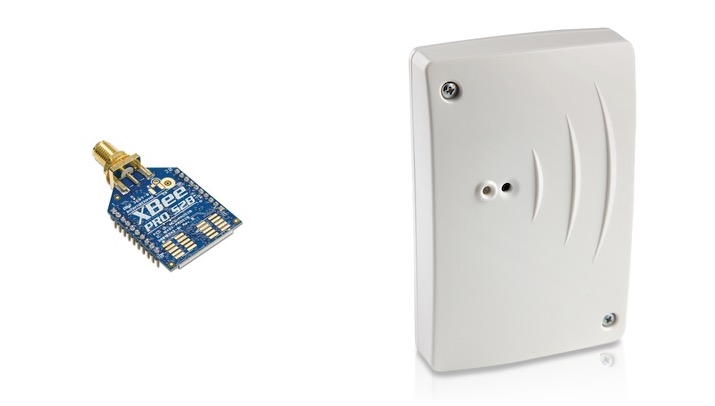
The SolarEdge AC Switch is a good solution for SolarEdge owners.
Make Sure It Will Fit In Your Switchboard
The Catch Solar Relay takes up 2 poles worth of room (35mm) in your switchboard. You’ll also need room for a single-pole circuit breaker and, if you are switching more than 4 Amps, a contactor. If you haven’t got the space, a switchboard upgrade will be costly.
Note to new house buyers: put in a much bigger switchboard enclosure than your builder specifies. Then you’ll have room for the monitoring and control that a smart solar home needs to operate optimally.
Be careful how you switch appliances off and on.
The Catch Solar Relay should use an external contactor to connect or disconnect the power to appliances that use more than 4 Amps. A contactor is an external device that is designed to safely switch big currents. So you have the small switch on the relay driving a bigger switch, rated to the appliance:
If you are switching a simple resistive load, such as a hot water element or a simple water pump, then switching the power supply with a contactor is fine. Just be sure to configure the relay timing so that it does not oscillate on and off too quickly. But a word of caution: if you are switching a more complex appliance, like a heat-pump, air conditioner or bitcoin mining rig, then check with the appliance manufacturer on the best way to switch it on and off remotely.
Every appliance is different. Some appliances from forward-thinking manufacturers will have an input that your electrician can use to command it to switch on and off gracefully. If available, that’s a better option than just killing the power.
If your appliance manufacturer has had the foresight to comply with the voluntary Australian Standard for Demand Response, AS4755, they will provide such an input. If you are using a dedicated input on your appliance for switching – be aware that you’ll need to run a cable to the appliance from the relay in the switchboard – adding to the installation cost.
What’s better for powering a hot water element, the Solar Relay or a hot water diverter?
Short answer: if you want to divert your excess solar energy to a hot water element, then a hot water diverter like the Catch Power Green Catch is better. Instead of switching the whole element on and off as the solar rises and falls…
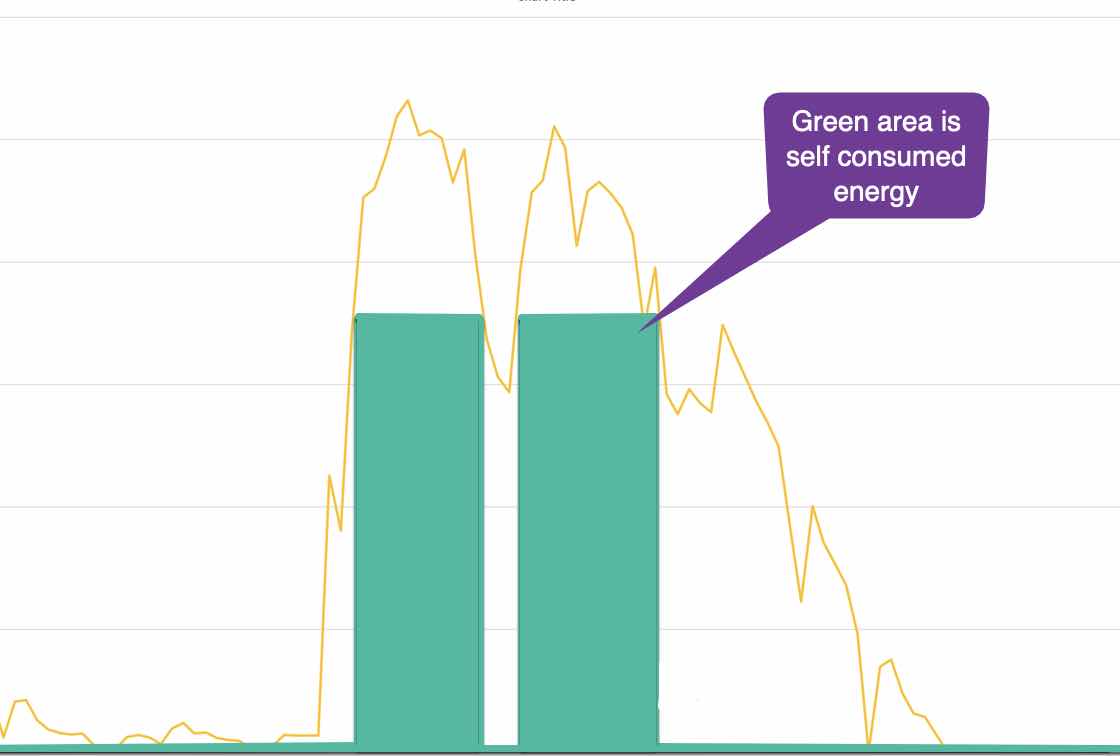
How a relay controls a hot water element
… a hot water diverter regulates the power to the element to consume just the right amount of excess PV, so you’ll use more solar electricity and less grid power. That’s why the Green Catch costs $750 instead of $357.50 for the relay.
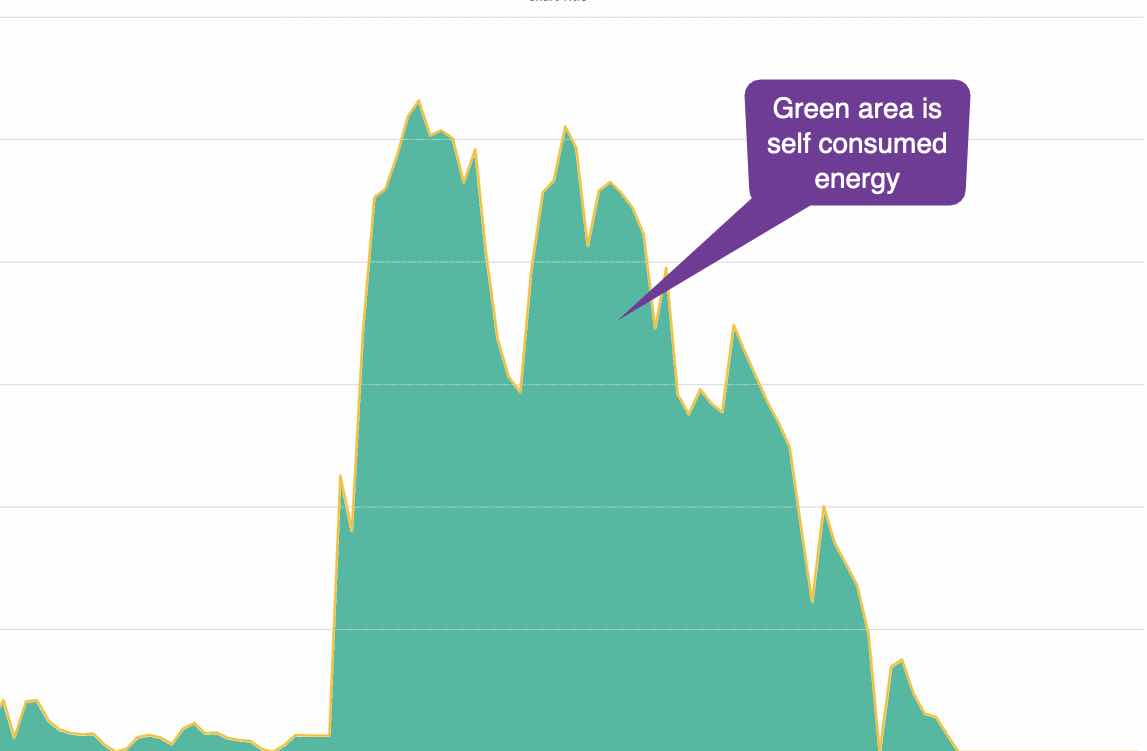
How a hot water diverter controls a heating element
Got lots of big loads? You can have more than one relay per house.
Thanks to the Catch Solar Relay’s configurable logic described earlier, you can happily use multiple relays for multiple appliances. You just need to be careful how you configure them, or they’ll all be fighting like Kilkenny cats over who gets to use the excess solar.
Catch Power’s Scott Young explains:
“If there are a number of loads that can be controlled by surplus solar then more Relays can be installed. The key to them operating harmoniously is in the setting for when the loads are turned on. If one load is set to turn on after 10 minutes that the surplus criteria have been met, then the next Relay can be set with 11 minutes until it turns on. Once the first Relay turns on the surplus will drop to near zero and the next Relay will wait until there is enough surplus solar, then wait for 11 minutes before turning the load on.”
A cheap and simple way to use more solar and less grid power
Feed-in tariffs are falling. Time-Of-Use tariffs are becoming more popular with networks and some are even mandating them for solar power system owners. If you want to maximise your self-consumption and save money with a ToU tariff, simple, well thought through devices like hot water diverters and the Catch Solar Relay are a great way to put your big, time-agnostic loads on autopilot.
There is a lot of hype in the solar industry right now from startups spruiking AI, machine learning, blockchain and other whizz-bang solutions. Ignore them. All you need to make a big dent in your self-consumption is a device than uses old-fashioned but well thought through logic to switch a large load on when there is enough sun, and top it up on a cheap tariff when there isn’t. The Catch Solar Relay is a great way to add this functionality to any existing solar system, as long as you have room in your switchboard!
It will be on sale from October 23 2020.
Update 16th Sept 2020: I’m afraid we got the date wrong and the Catch Solar Relay will actually be available from the 2nd of November 2020.

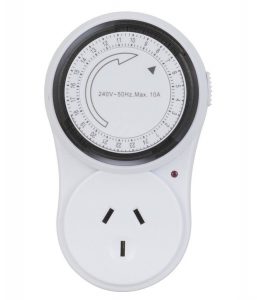
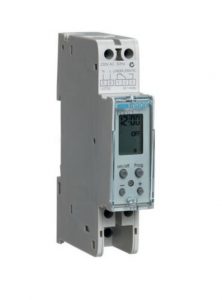
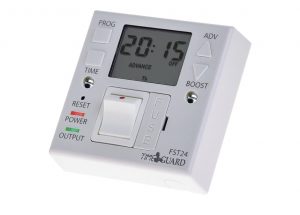
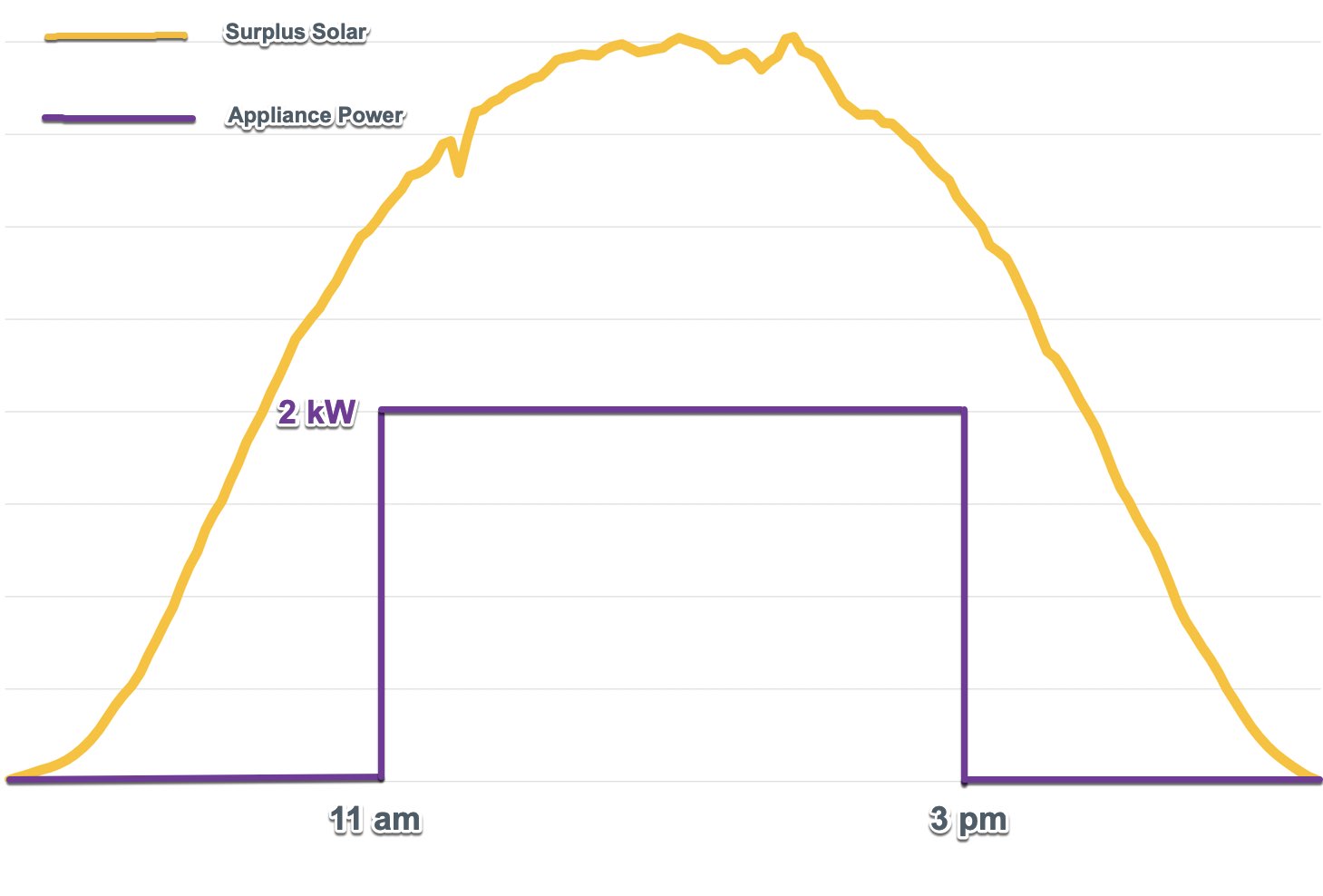
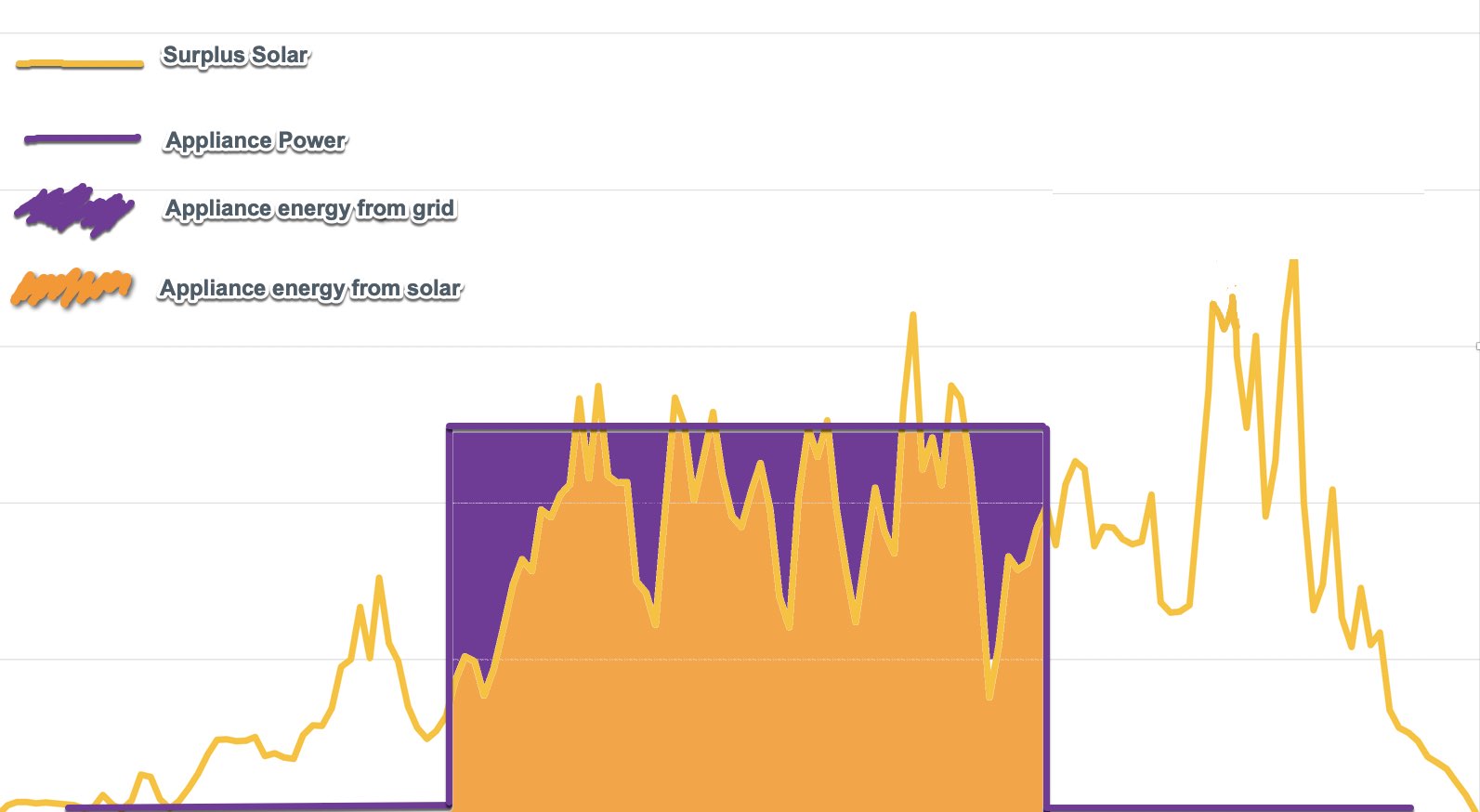
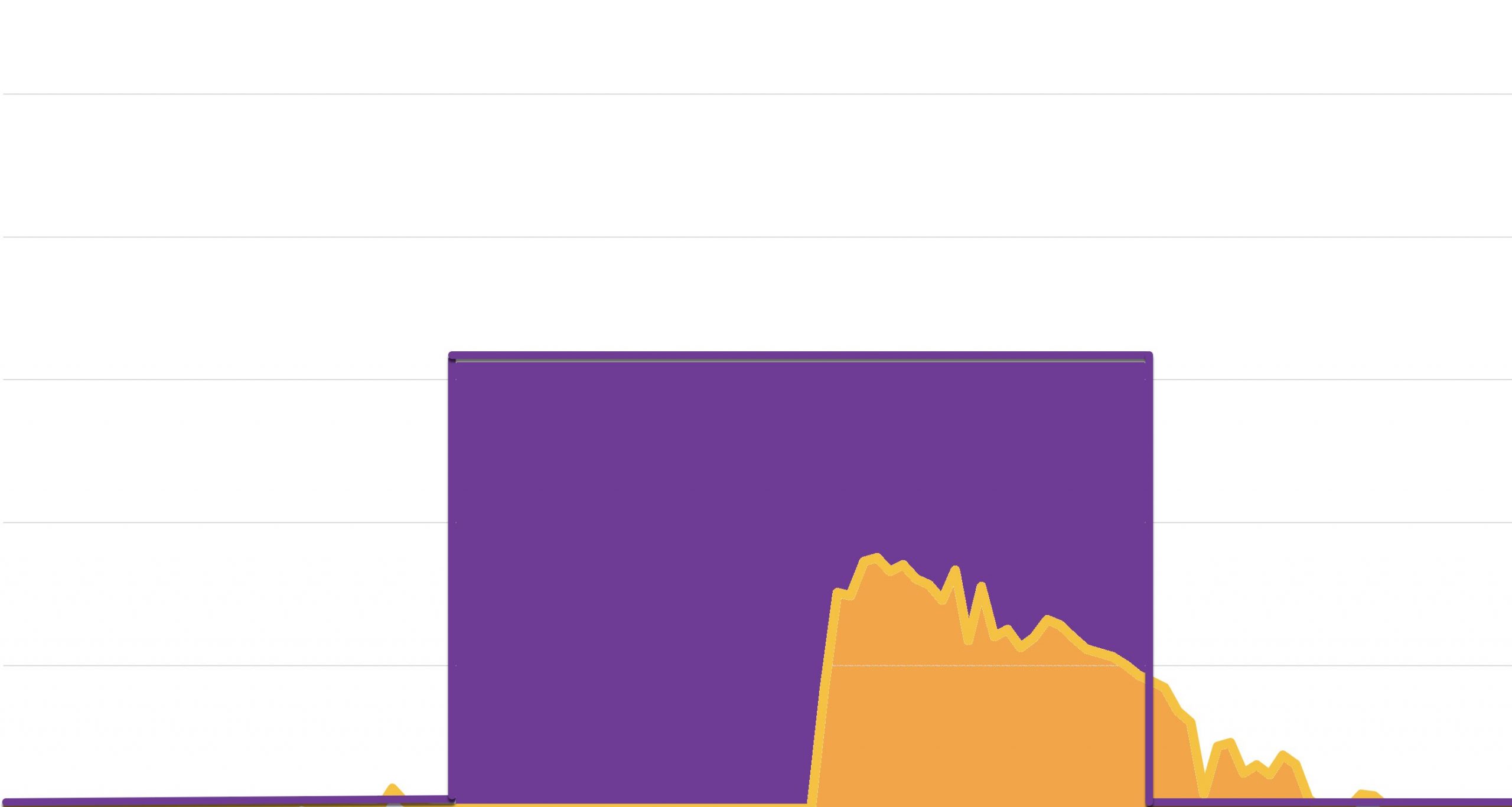
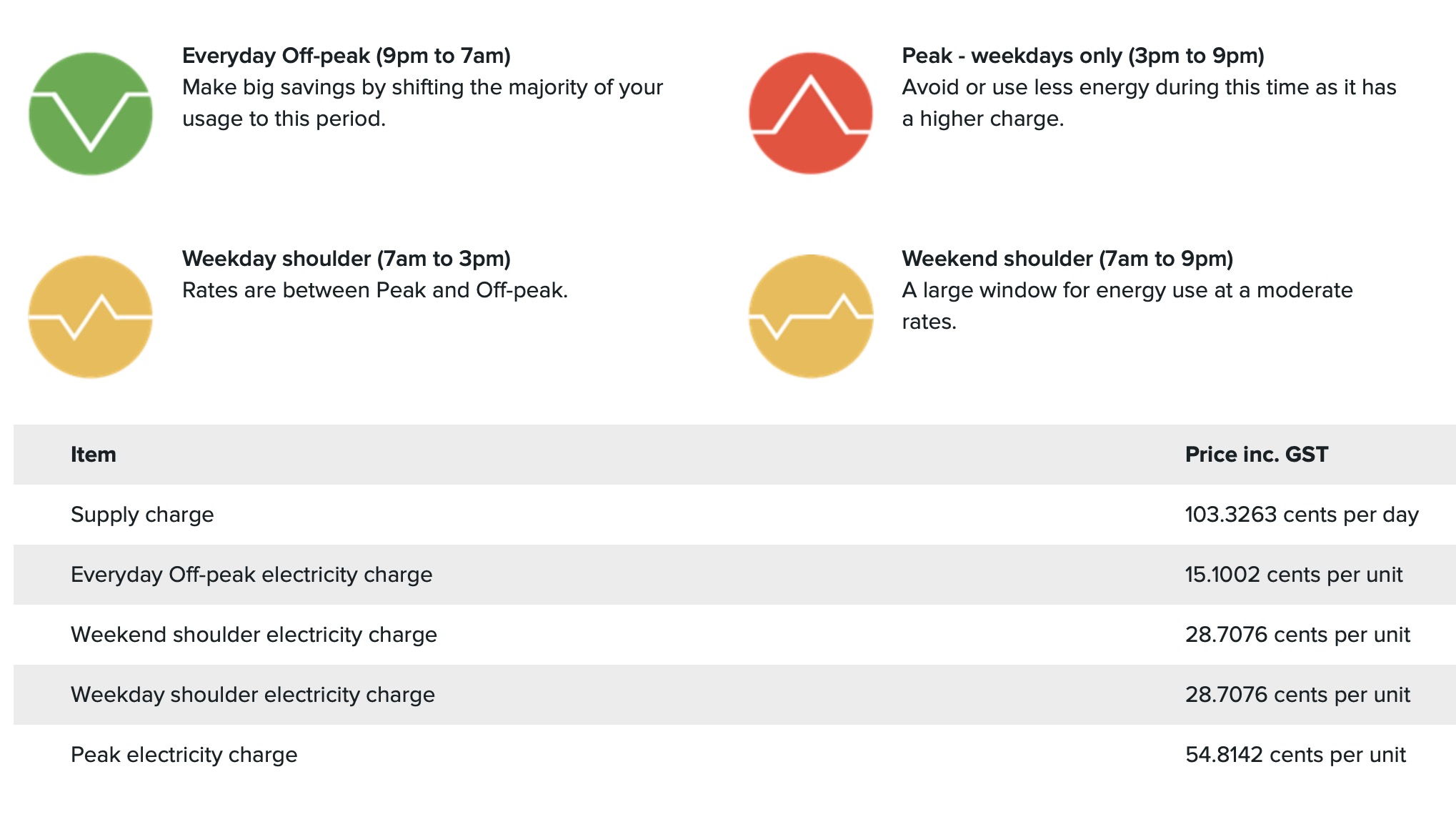
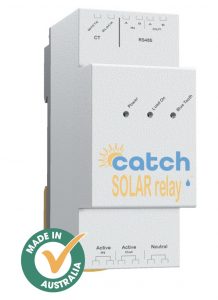

 RSS - Posts
RSS - Posts



Thanks for that great article. The message re contactors for loads greater than 4 Amps confuses me (lots of things confuse me!), as there are small DIN-mounted relays on the market switching 16A of 240VAC and they do not have any heat sinks, like those Finder Series 19 relays Fronius is recommending amongst others.
Finn: “…they (FiTs) have already dropped to 3c in WA (before 3 pm). Markets in other states will likely soon follow WA’s lead.”
Aussies must punish parties which initiate this theft, especially in states in which state government oppose renewables and defend state-owned monopolies.
Meanwhile Tesla’s Battery Day (22nd September) may herald MMB tech., to free us from a poorly-maintained, archaic and dangerous grid.
Lessor –
”
Finn: “…they (FiTs) have already dropped to 3c in WA (before 3 pm). Markets in other states will likely soon follow WA’s lead.”
Aussies must punish parties which initiate this theft, especially in states in which state government oppose renewables and defend state-owned monopolies.
”
Apparently, the Western Australians who read this blog, seem to be quite okay with the 3 cents per kWh DEBS Energy Buyback Scam – I have just checked, and, at the time of me posting this, apparently, I am the only one who objects to the reduction in the Feed In Tariff, being the only person who has signed the petition to have the reduction overturned (see the proposal for rectification, contained in the wording of the petition).
Clearly, the other Western Australians who read this blog, apart from me, support the reduction.
“Evil flourishes, when people do nothing, and allow it”.
You might be interested in reading the web page at
https://solar4ever.com.au/Powerbank.php
”
With peak pricing, between 3pm and 9pm likely to cost 60 cents per kWh, then if you decide to forgo your 3 cent payment per kWh for surplus solar power and store it in your own battery instead then during peak hours you are drawing down from your battery at a saving of 57 cents per kWh. If we say you use 10kWh each night, then that’s $5.70 a night or $2,080 a year benefit. If your 10kWh battery has cost you $8,000 then you’ve paid it off in four years and have another six years warranty left on it.
“
Hey Bret, post the link to the petition as i can’t find it. I’ve written to the minster and numerous others about this issue and the increases to the inefficiency fixed supply charges, but yeah not much luck.
Shane – the petition is at
https://www.change.org/p/the-premier-and-members-of-the-western-australian-state-parliament-encourage-instead-of-punishing-use-of-domestic-rooftop-photovoltaic-systems
and people in WA might be interested in joining
https://groups.io/g/seusa-wa
This reduction to 3c here in WA slipped through way under the radar. I think few saw it and few know about it still. I only found out last week when reeasrching a new system! 🙁
Nice, thorough article. Prudent self-consumption is becoming more and more important. Thank you.
Thanks Fin, You should check out Home Assistant https://www.home-assistant.io/ This will make the Smart Relay look dumb! My solar smart automations include:-
– Turn on dishwasher and washing machine when excess of 2400W of solar power is available
– Charge EV when excess solar of 3500W is available, turns off if there is no solar surplus for greater than 5 minutes
– Turn on oil heater when 1200W of solar is available (Great for COVID Winter WFH)
Not sure timing the dishwasher will make that much of an impact.
What I’ve observed on the dishwasher, it doesn’t run at 2400W for 2 hours. It will use that for about 10 mins to heat the water up (depending on the dishwasher wash mode). The rest of the time, the power is used to circulate the water pump to spin the arms, drainage etc.
Furthermore, with my dishwasher, I had the tap connected to the hotwater line since the hot water is solar hot water/off peak powered.
Ditto for the washing machine, unless the washing machine has an element to heat water, it uses pulsing power to run the agitator (which the Powerwall 2 notices because it can’t react fast enough to match the changing motor pulses). Again, the hot water line is connected directly to the solar hot water, so there’s no need to heat the water.
The dishwasher/washing machine, while they have high power ratings, they are only used for a very short period of time, not the entire program cycle when it’s on.
It’s only really useful with constant high power with significant run times such as clothes dryers on heat, hot water heating, element heating, air cons.
The effort to fuddle about with the dishwasher/washing machine is not worth it to offset the solar excess. Given that these machines do not use maximum power for the entire program cycle that they run. If you don’t believe me, put one of those plug-in watt meters and see how much energy they consume for the program cycle.
For a example, a 2400W kettle sounds high powered. But to boil a cup of tea, it might only run for 2 mins, if that. Which is only about 80watt hours.
(2mins over 1hr times 2.4kw = 80Wh). Is 80Wh really worth worrying about to offset with solar?
Ditto for my dishwasher, it uses about 400Wh (even though it heats water at 2.2kW for 10 mins over it’s 2 hr program). Again is the inconvenience of waiting for excess solar to turn it on when excess is over 2200 watts?
The cost savings of the Solar Relay wouldn’t be worth it at those rates.
80Wh is about 2c. At $250, I would have to run the kettle 12500 times to recover the money.
Or for the dishwasher, it would take about 11.2c per cyle or about 2200+ times to break even the cost of the Solar Relay.
** assuming 28c/kWh.
Ditto for the oven and iron, they cycle on and off. That is, they don’t run full power the whole time while it’s in use.
Brett,
What is your approach and what is your system config to be able to determine excess solar. I’m interested in the details.
I create binary_sensors within the configuration which are true or false based on the surplus of solar (ie. 1kW, 2kW, 3kW surplus etc…). Then I set up automations that turn an appliance off/on depending on the appliance type. If it is a heater it will switch off as soon as the sensor is false. If it is a washing machine it continues to run until the load has finished.
Hope this helps?
How about lucky Vic bastards like me that still get 72cts FIT. Is there a way to prevent us using this ourselves during the day and make sure that it all goes into the net?
I have a 13 kWh LG Chem RESU 13 battery coming soon and I am looking for a way to optimise the use of a single charge discharge cycle per day. Rooftop panels (4.81 kWh) plus off peak electricity (in that order) is what I would like to use to charge the battery. I will be moving to wholesale linked prices (Victoria – Jemena) soon and want to use my battery to avoid using grid electricity when the prices is $0.20 a kWh or more. Not planning on any export unless it is at PFIT rates or more.
Can this device help me or are there much better options with my Sungrow Sungrow SH5K-30 hybrid inverter or Reposit?
Thank you for this article. I am not able, at present, to get a Sunny Island to divert power once the battery has been recharged (this applies to Lithium batteries only) and the only other method that SMA suggests is to work with load shedding but with this I can trigger the diversion at 90% SOC but it will only stop at 50% SOC, which means I loose half of my battery power if solar production is below the draw of the hot water system. I have yet to find out if the Catch units will work with off grid, as none of their documentation indicates an off grid setup.
The frequency shift detection described in the article might do it, but for off-grid, an alternative is the Jackal power diverter from Plasmatronics, if you have a 12v, 24v, or 48v battery. It skims off just the excess PV generation, like the second unit in the article, up to 4.8 kW. It has several diversion management methods. My recollection is that it is also not cheap, but I’ll probably have to bite the bullet when my off-grid build is finished, and the PV system goes in.
Hi Finn, great article.
Can the Solar Relay Top Up function be configured to top up from an available Controlled Load supply/tariff?
I can’t say for sure but just looking at their brochure and picture it certainly doesn’t have seperate CL inputs. If you are talking about CL you are most likely talking about hot water, and instead of this device plus an external contactor (as 4A isn’t enough for hot water, or most decent loads) you’d be better off buying a hot water diverter – the cost may not be much different and they work better. And some of those do allow CL switching.
Also note that some power networks may not allow switching, I know it is ok in SA but in some states a CL appliance has to be hard wired I believe so can’t be switched like that.
Also you can run a auto changeover switch system for CL/Mains with two contactors and a relay, which costs a bit but is possible.
I’m getting it done for my car charging soon – during the night it will charge off CL to a max limit of say 60%, and during the day an addon to my Tesla wall charger will vary the charge rate to match solar exports and allow up to 100% charge.
My hot water is switched by a zwave switch and controlled by my home automation system and so has various smart rules (turn on at certain times when HW is too cold even without enough solar for example)
Hi Gibbo110,
No, CATCH Solar Relay only operates on one tariff input. If that input has Time of Use tariffs available, then you can program the load to come on during the time of the cheaper rate.
Would it have really been that hard to make the contactor inside it 20A or more, instead of 4A? That is too small for almost any load that would be worth putting on a device like this. I know you can then spend a bit more and get an external contactor, but that is more cost, wiring, complexity, things to go wrong, and even more switchboard space.
Also a pity they don’t allow them to properly communicate when you have multiple devices, setting them as described isn’t perfect and ideally you’d have a overall way to control them together with priorities, etc.
Love this! Hot water as thermal battery idea is becoming more relevant to us each day, especially on the topic of grid stability. For those who can’t afford a battery system, this is the next best solutions to maximise self-consumption from 20% to 80%. Typically, supply and installation cost of power diverter and a storage tank is less than 50% of an equivalent kWh battery system.
Assuming 55deg Celsius is the minimum storage temperature, 85deg Celsius is the maximum temperature storage, a 500 litre tank can store 17kWh of usable energy. This is good for 4 to 5 10min showers. Hot water tank has lower maintenance cost and effort as well.
As a mechanical engineer point of view, this is much easier and affordable to implement compared to a battery storage system. Check out the ROTEX tank and AC.Thor linear power diverter system, which able to power your hot water tank linearly via your available excess PV energy.
If a householder is considering getting a new water heater installed for this purpose, the householder needs to be mindful of the extra costs and statutory obstruction and increased danger.
I have discovered this, in trying to get a water heater manufactured by a crooked company, replaced under warranty, that the crooks will not honour.
With the Standards Australia’s campaign of making Australia increasingly dangerous (“Your house is on fire” .. “Oh – I had better climb on my burning roof to turn off the DC isolators for the solar panels, that Standards Australia required to be put up there so that they can kill more people”), the applicable plumbing standards designed to kill more Australians, through Standards Australia banning running hot water in Australia, so as to spread more diseases in Australia, apply.
”
AS/NZS
3500.5:2000
Plumbing and
drainage –
Domestic
installations Clause 3.4.1 states water minimum storage temperature for heated
water is 60°C to inhibit Legionella bacteria growth. Requirements for
delivery temperature (clause 3.4.2) at sanitary fixtures include “All new
heated water installations shall, at the outlet of all sanitary fixtures,
used primarily for personal hygiene purposes, deliver heated water not
exceeding 50°C “.
(So, water in the pipes, breeds bugs, and, keeps them alive and breeding there, so they can come out and attack you in the shower and bath)
Compliance with this clause is not required for
kitchen sinks and laundry tubs where the preferred delivery
temperature is 60°C.
(but, it is required that having a bath or shower, gets you covered in bacteria, especially legionella)
AS 4032.1:2005
Part 1:
Thermostatic
Mixing Valves –
materials design
and performance
•
requirements This standard covers design specifications for TMV devices, including
limitation of temperature adjustment, hot water isolation requirements
and sensitivity to temperature adjustments. Maintenance instructions
state that the maximum time interval between maintenance for TMV is
12 months
”
So, new water heaters are prohibited from supplying water hotter than 50 degrees centigrade, to bathrooms (if you want a hot bath, you have to heat the water in stockpots on your stove, and, carry them full of hot water, to the bath, and hope that you do not trip over or otherwise drop them), and, the required temperature regulating devices need to be fitted upon installation of a new water heater, and are required to be serviced at least once every year.
So, in Australia, new water heaters have an additional cost of possibly several hundred dollars, at the time of installation, and, hundreds of dollars every year.
And, that is apart from the increased risk of dying or sickness, from unsafe water, especially, if, like in Perth (WA), the water supply is a mixture or sewerage and bore water.
Don’t blame me for this; like they say, “Them’s the rules”, brought to you by the megalomaniac Standards Australia, whose job it is, to make Australia increasingly dangerous.
A thermostatic mixing valve is a requirement for public building and health care industry and has a maximum temperature of 45C, it also has a number of other features. It needs to be maintained at least every twelve months. The normal tempering valve used in most other buildings does not require maintenance every 12 months.
If you would overrule the Australian standards, and the Plumbing Code of Australia, that is up to you.
But, it is an area where care needs to be taken.
The bodgy water heater manufacturer that will not replace its water heater under warranty, rendering its product warranties worthless, is trying to make me pay $700 to rectify the water heater manufacturer’s contravention of the Australian standards applicable to water heaters.
That is not true about hot water tanks from not being able to supply hotter than 50C water.
The thermostat on new hot water tanks can’t be set below 60C now. Some older hot water tanks were able to be set to as low as 50C. And people turned them down to 50C thinking they are saving energy. All they’ve done is increased the chance of letting legionella survive. Legionella survives at 50C but does not multiply. Thermostats usually go up to 75C to allow people to store more heated water in the tank after the off-peak heating (or controlled load heating) cycle is finished and this is useful in large households that can’t wait for the next off-peak water heating cycle to start.
It’s the tempering valve that the controls the final water temperature after the water leaves the hot water tank. That is independent of the hot water tank being able to heat the water higher than 50C. This is where the contention is for some people. The tempering valve is not part of the hot water tank system itself. It’s basically a post mix of injecting colder water to the hot water output from the tank before it is distributed to the premise.
My solar hot water system can heat the water up to 90C+. Just as well the tempering valve is there to bring the hot water back down to 50C at the taps. At 90C, not even adults would be able handle being exposed at that temperature for a few seconds without scalding.
On some hot summer nights, my solar hot water system actually circulates the water back through the roof panels to release the extra heat to the night air because it’s too hot to store in the tank as well as being a safety feature to decrease the pressure in the tank. (which is why plastic pipes can never be used for the piping works between the tank and solar collectors, they must be copper).
A friend of mine had a wrong sized tempering valve fitted and for months, they could only get lukewarm water (just using the hot water tap, cold water tap wasn’t even turned on) both solar/off heating was working. The tempering valve was replaced and they’ve been able to actually use hot water. The old tempering valve was injecting too much cold water leading to the thinking that the solar/off peak heating was not working properly. Since the tempering valve was replaced, everything works a charm. There was nothing wrong with the hot water tank system itself. They were ready to replace the whole system until I suggested to have the tempering valve checked. That saved them nearly $4500 for the sake of a $150 vavle. Some shonky plumbers don’t bother to check the basics and hopefully land a big job.
It’s up to the plumber to make sure that tempering valve is installed correctly as this is not supplied as part of the hot water tank itself. It’s a post fitting subject to state law.
I just had that happen to me. Endless problems trying to get hot water. It was the tempering valve.
Now great pressure and nice hot water.
Dear Peter, you mentioned using the hot water service as an energy storage unit for excess solar energy. We have underfloor heating which before solar started to look like an incredibly expensive indulgence. Now, with excess solar feeding an enormous amount of electricity into the floor and storing it as heat, we have the most massive and inexpensive storage of excess solar energy I can think of. Sure, its output is only heat, the same limitation of your example of HWS but it is useful heat. Now if we could make a little device that turned low level heat into electricity ………hm!
Is this function similar to the multi function relay option on most SMA inverters when it is set to self consumption? That is other than the fancy load shaping feature!
The SMA inverters also allow options to set the trigger kW amount and on and off times. They also requires an additional contactor for higher current loads.
With this functionality it is hard to justify expensive options like the SMA home Manager system.
Hi Owen,
Can you elaborate on:
“Is this function similar to the multi function relay option on most SMA inverters when it is set to self consumption?”
I have a SMA Sunnyboy 6KW inverter (installed 2021). I wasn’t aware of any option for external relay control directly from the inverter.
I know inverters like Fronius have Digital I/O’s as standard for this exact purpose, but not the SMAs I had thought.
I was thinking I would have to figure out out to extract real-time data via the RS485, using some kind of terminal software, or working out how to crack into this Modbus protocol I hear about.
any feedback from your experience would be great 🙂
It is worth it. With Home Assistant I measure the outputs of the Washing Machine and Dishwasher. We wash towels at 60 degrees, you will see in my graph that it uses up about 1.2kW/h of power for a wash cycle https://ibb.co/ysNpmrN.
So,
1.2kW/h x $0.36 = $0.43 per wash.
Depending on your solar feed-in this is your saving up to $0.43 per wash for this one appliance.
I use this method on a heater, washing machine, dishwasher, car charger. So it does have a payback in a period of time. If there are kW coming from the sun then these devices run. When there is not they don’t!
My main point is Home Assistant is way more flexible than a ‘Smart Relay’ or hardwired timer. It turns things on when there is enough surplus (ie. 2400W) not relying on a timer to assume there are kW when there might not be due to conditions. So in summer, my washing machine comes on early!
Finn and others,
Are there any better or more economic solutions now available in 2022 for getting most out of PV for hot water heating (for both hot water and pool heating)?
Plumbers advising not to use heat exchangers because they have issues, including electronics, and short warranties. But without controllers integrated in regular electric heaters, what is best for maximising solar use?
Cheers, Hamish.
The catchpower solar relay is now wifi enabled, and can turn on loads via the cloud. Although the app seems to be in its infancy, I think this new technology will quickly develop to suit your above mentioned requirements.
Hi,
I’ve had a go at documenting my own setup doing something similar with Home Assistant.
https://www.smartmotion.life/2023/09/12/home-assistant-and-amber-electric-your-pathway-to-smarter-energy-management/